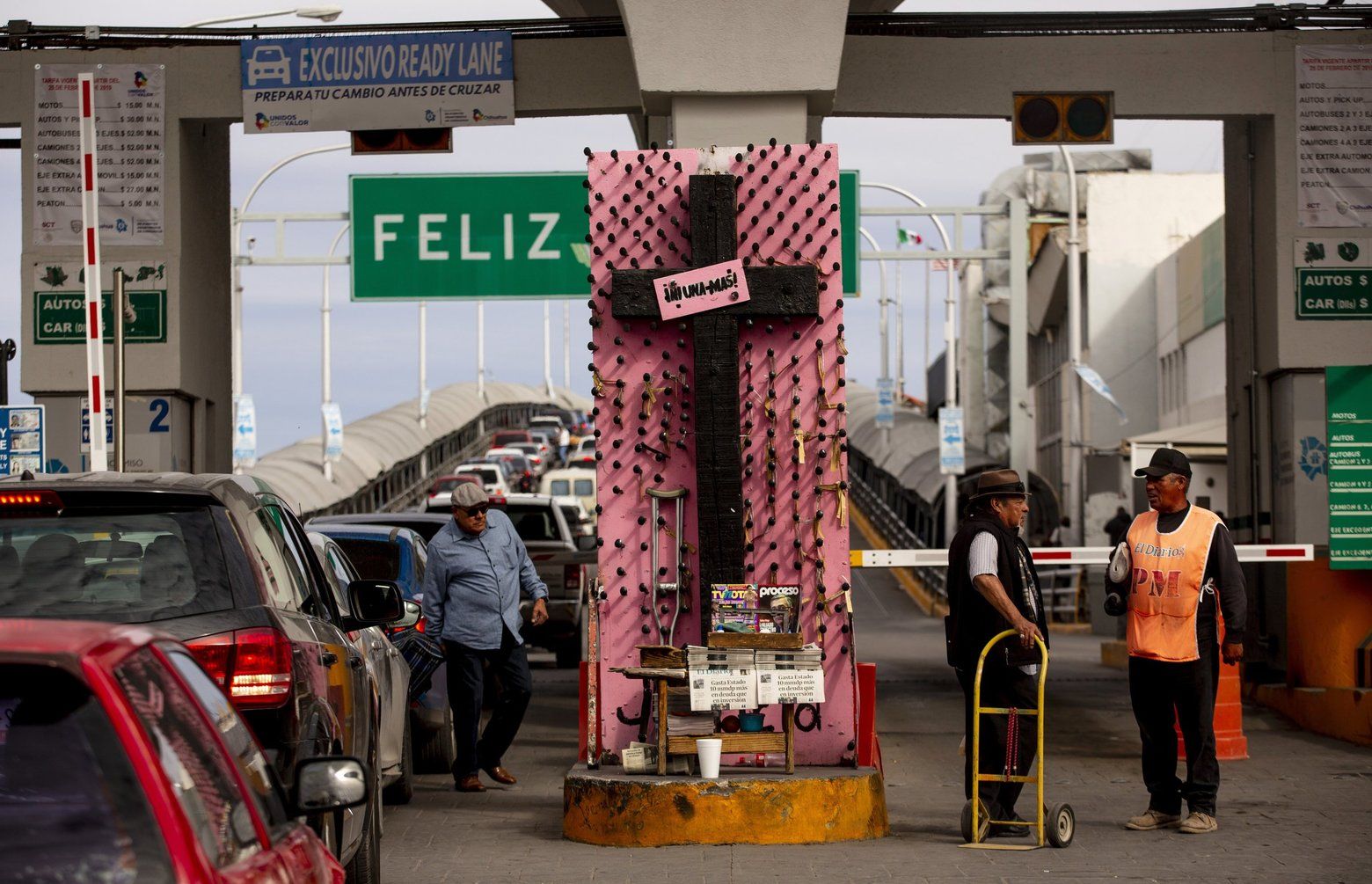When we arrived in Ciudad Juárez, Mexico, in February 2019, we were struck by how — in many ways — it felt like Seattle. Mountains rise above the horizon west of the city. Sitting on the border adjacent to El Paso, Texas, Juárez is home to many businesses that accept U.S. dollars. Many Juarenses were proud to tell us about the city’s progressive politics and the plentiful job opportunities at international companies, attracting newcomers from around the country. For many people, Juárez represents the hope of a more prosperous future.
It’s unsettling to see so many parallels in what was ranked as the most dangerous city in the world just a decade ago. That distinction is based on homicide rates, and in 2010, violence from the Mexican drug war was at a high. It’s easy to draw the connection between feuding cartels and the United States; international drug trafficking corridors run through Juárez. It’s less intuitive to connect the dots between America and the other kind of killing for which Juárez has come to be known: femicide.
The idea of doing a story on femicide in Juárez came from our colleague Vianna Davila, editor of The Seattle Times’ Project Homeless. She offered the suggestion in late 2018, having just read “Killing Marías,” a book of poetry by Washington State Poet Laureate Claudia Castro Luna. Each poem in the book is named after a different woman named María — María Luisa, María Eugenia, María de los Ángeles — who has been killed in Juárez since activist Esther Chávez Cano started recording the deaths in 1993 by collecting newspaper clippings.
As horrific as femicide might be, Castro Luna’s poetry is neither objectifying nor voyeuristic. She found a way to capture a glimmer of beauty in the darkness, revealing resilience and agency amid an entrenched and global culture of violence against women. You can read her poetry in this issue, and you can watch video poems voiced by women in Juárez at seattletimes.com.
We encountered that sorrowful strength when we spent time with mothers searching for justice for their missing and murdered daughters in Juárez. It takes remarkable courage for these women to paint murals, assemble mosaics, protest on the streets and speak with journalists after losing a child in one of the most horrific ways imaginable. Where some media coverage on femicide can skew bleak and gruesome, we wanted to highlight the will and resolve of women in the face of the most difficult of circumstances.
The mothers are joined by activists and artists who stand in solidarity against a culture of machismo, which Cynthia Bejarano, a professor of gender and sexuality studies at New Mexico State University, translates to “chauvinism.” The academics and activists we interviewed agree: These values are global, and many of the conditions that made these women targets for their killers — gender, race, economic disempowerment — reach far across the border.
All over the world, women are being killed for being women. In Tijuana, Mexico, we met victims of attempted killings who were applying for asylum in the United States, hoping to flee their attackers in El Salvador. In the United States, one in four women has experienced contact sexual violence, physical violence and/or stalking from a partner, according to the CDC. Here in Washington state, our colleagues Lauren Frohne and Bettina Hansen have been documenting the Missing and Murdered Indigenous Women (MMIW) movement. It happens here. We just don’t label it femicide.
And so today, on International Women’s Day, we present “Disappearing Daughters” — a project combining visual journalism with visual poetry to highlight the strength of the women of Juárez.
